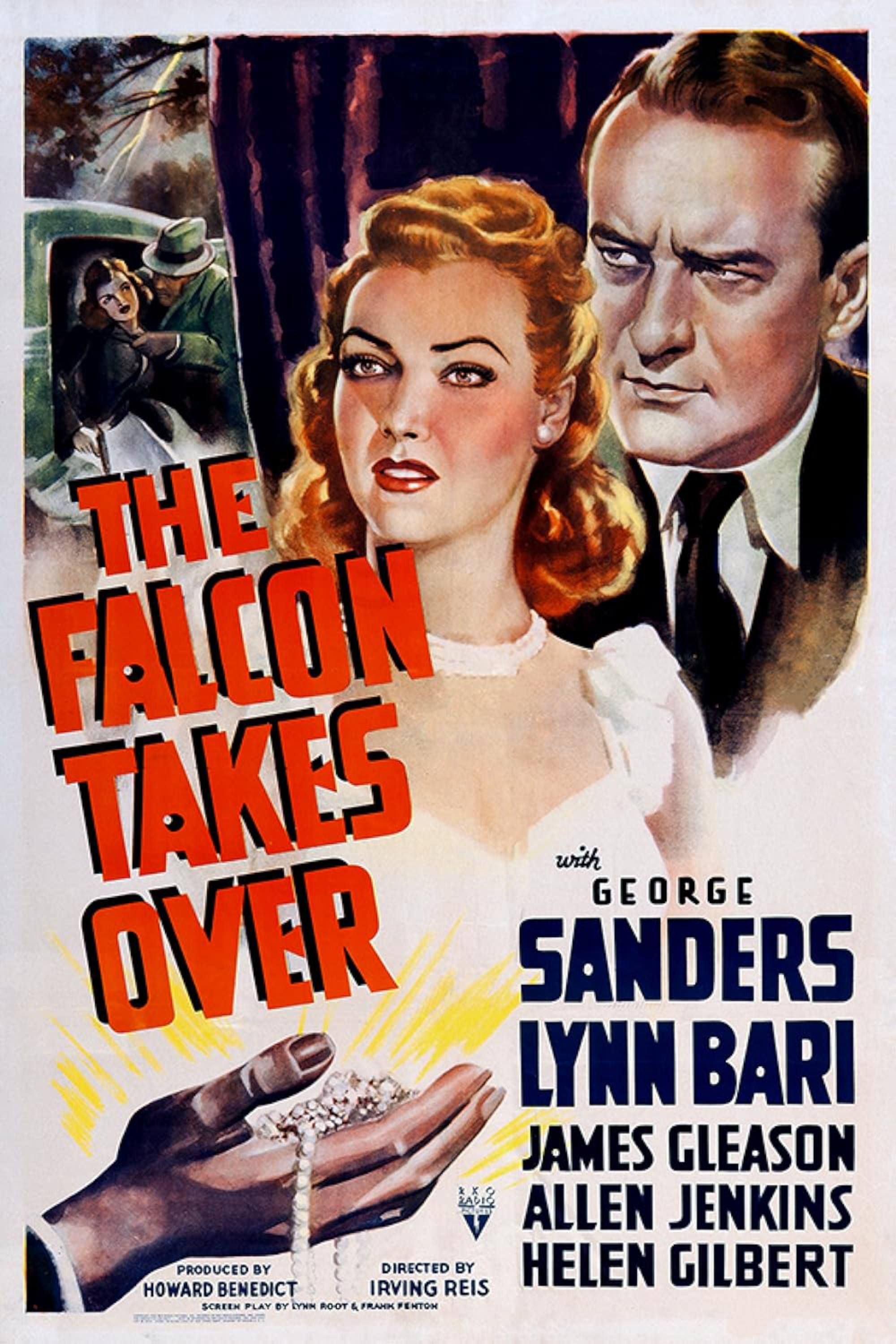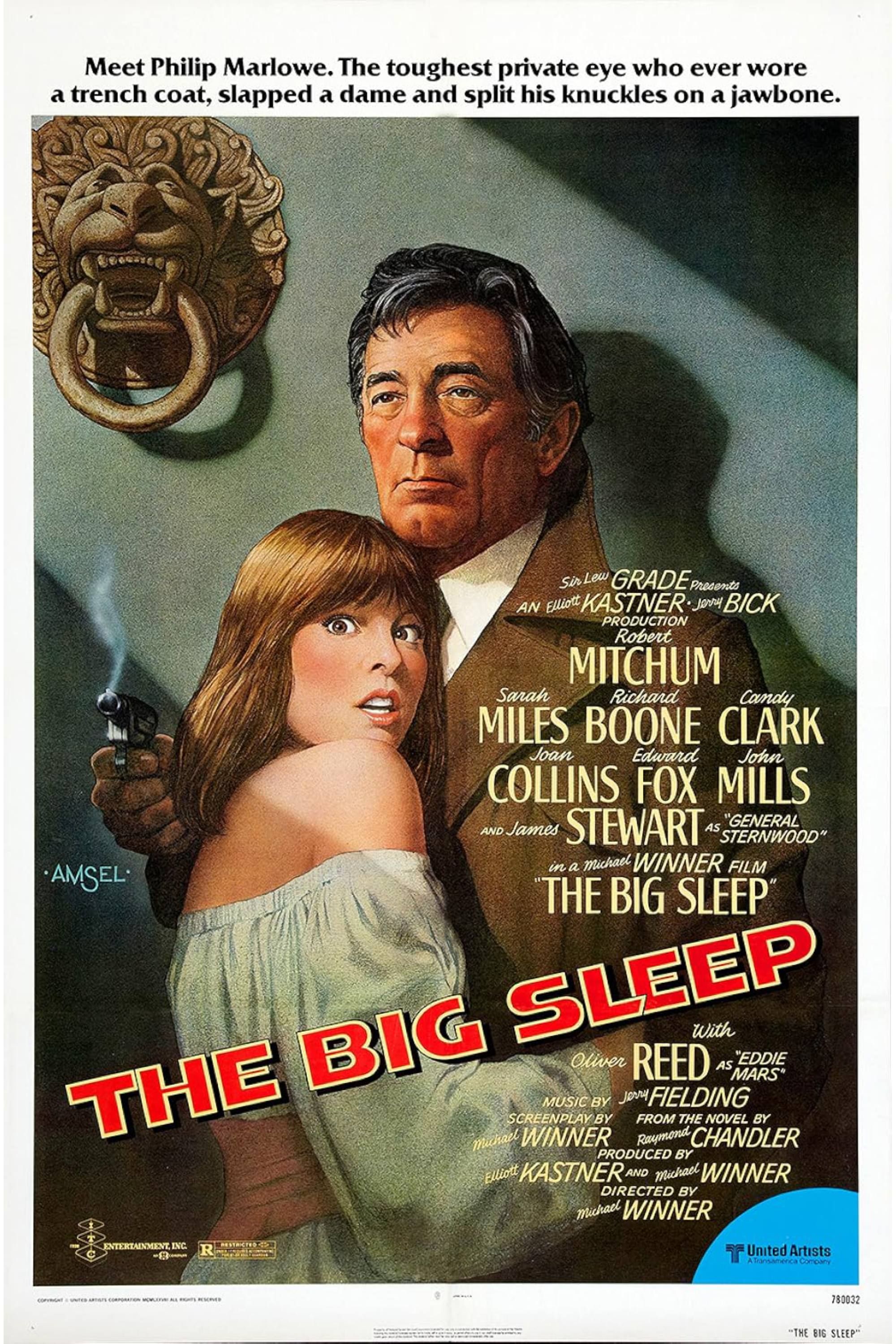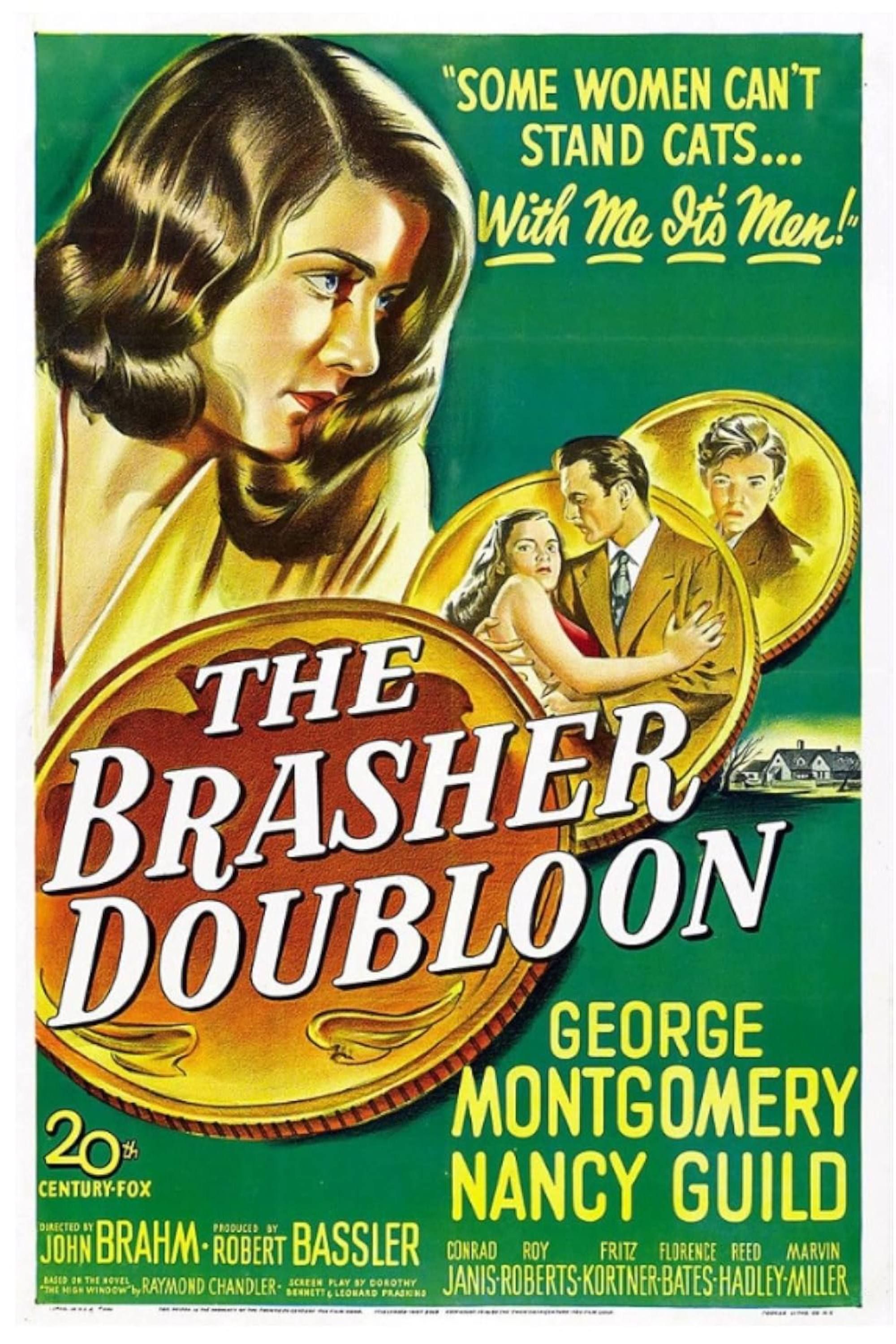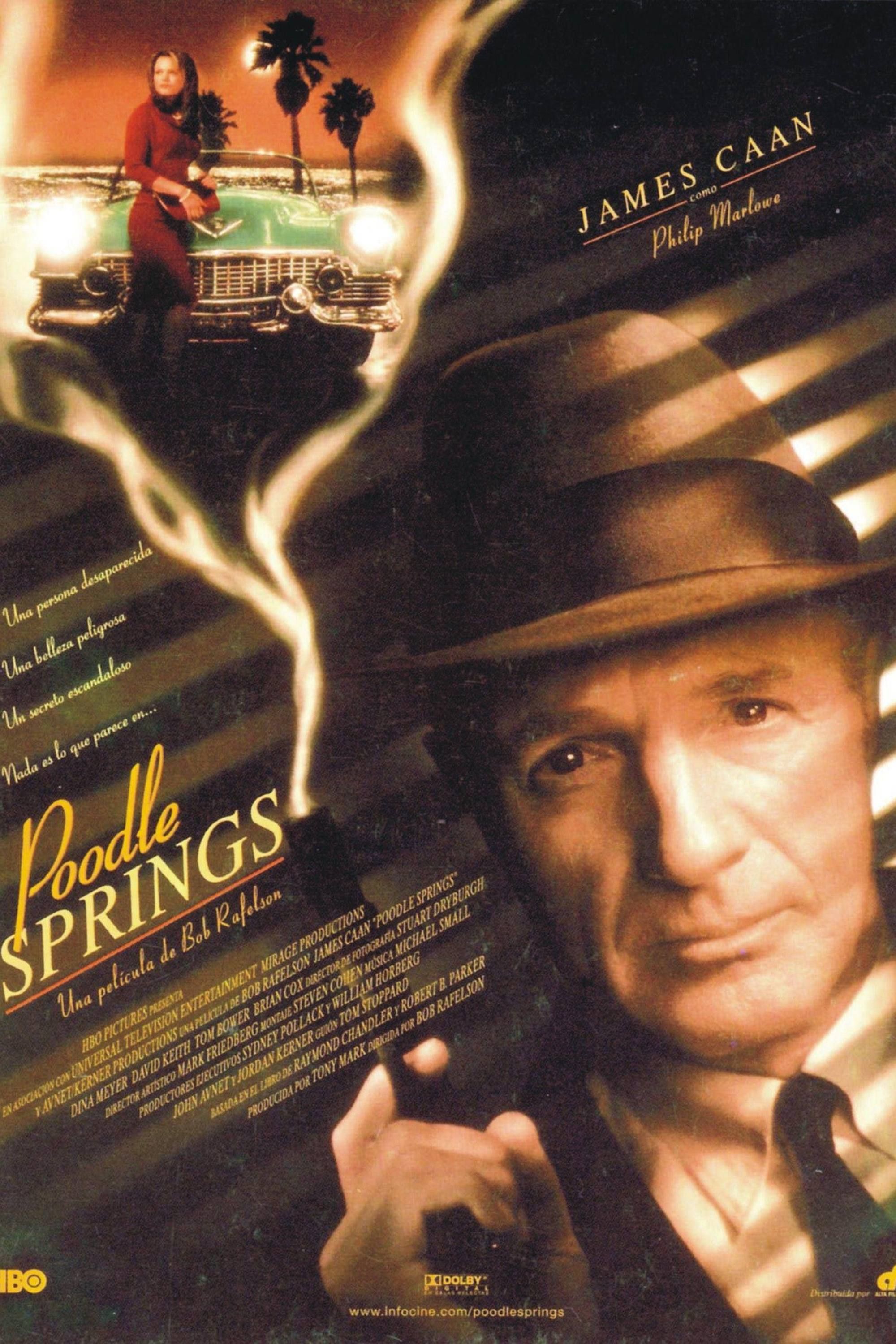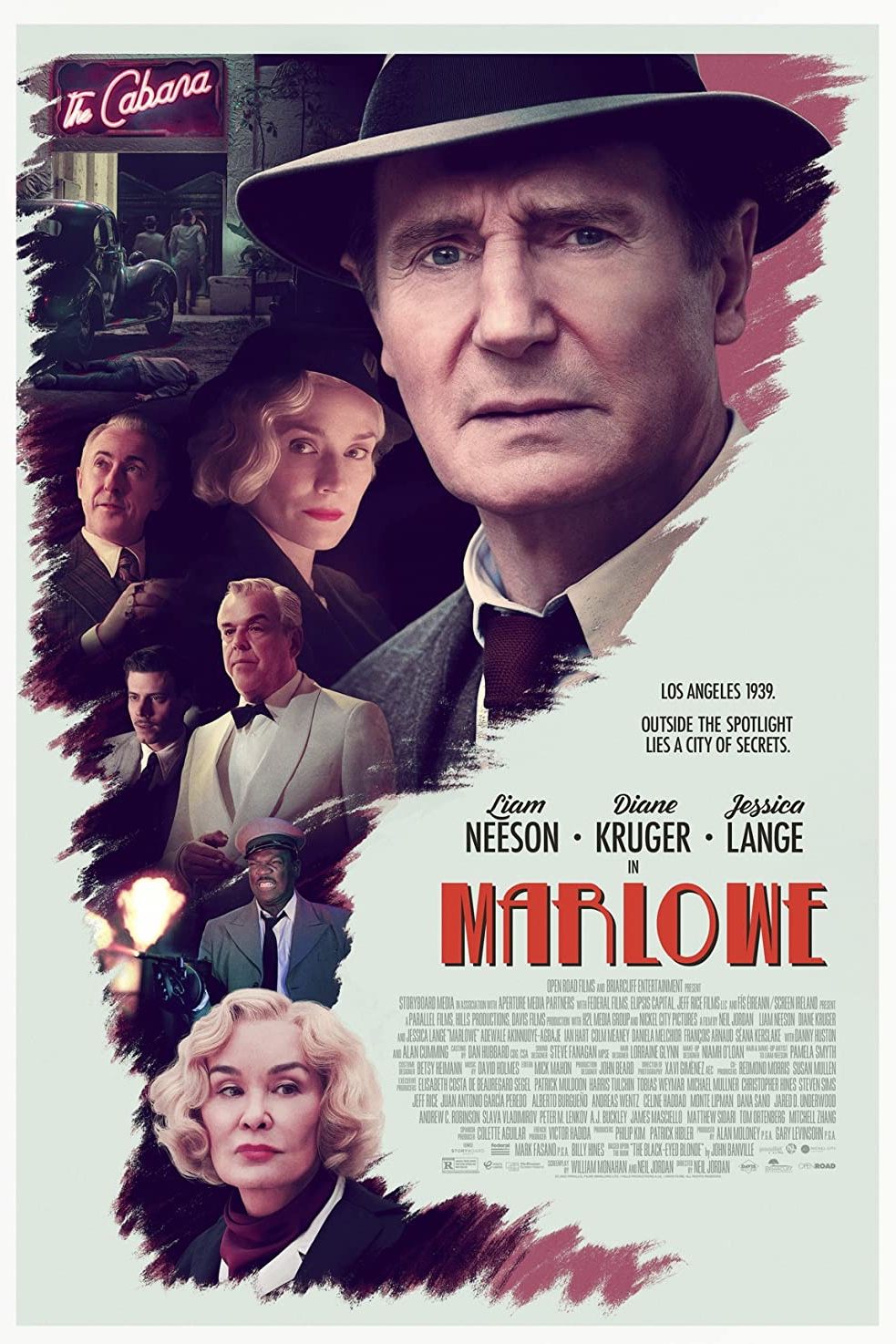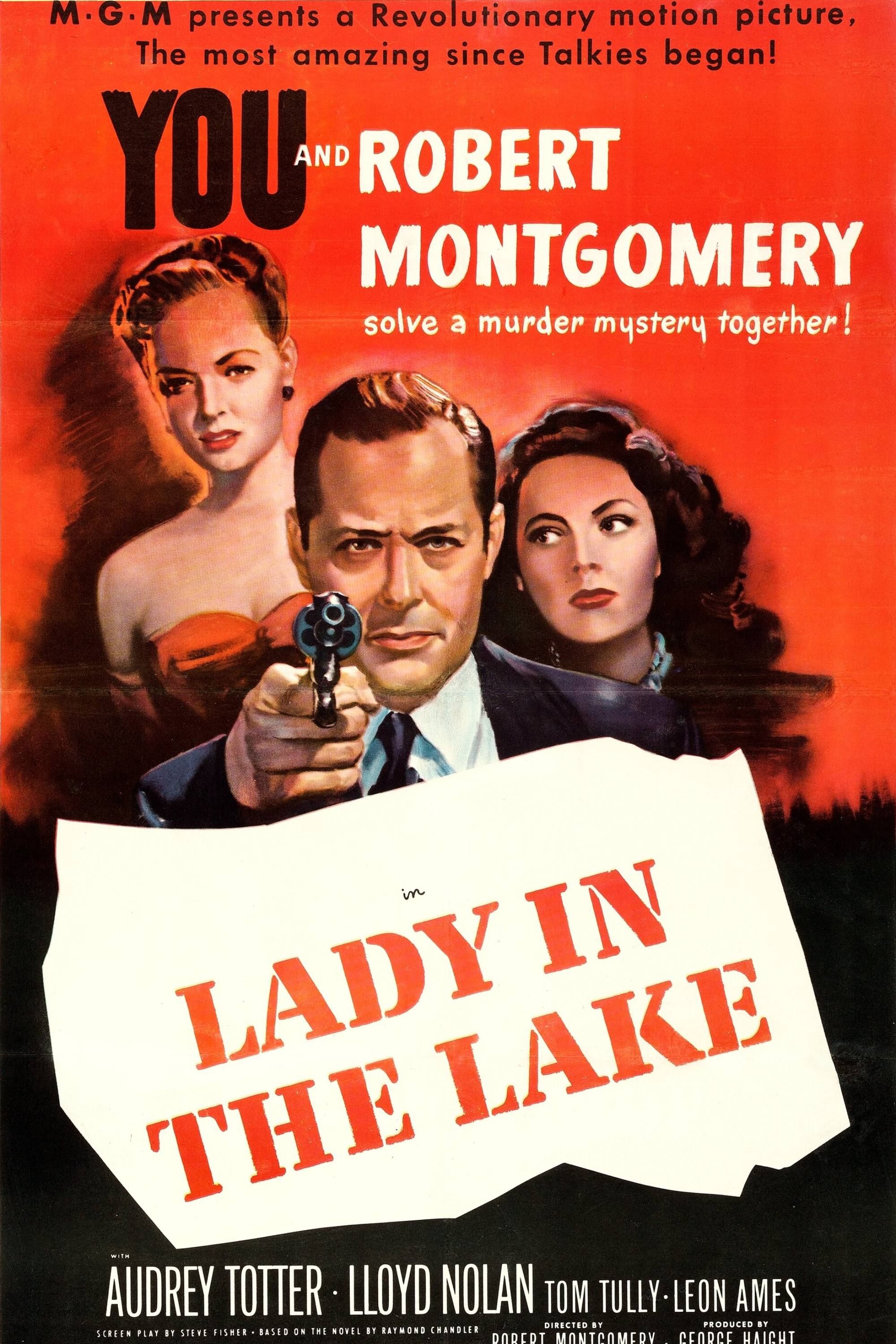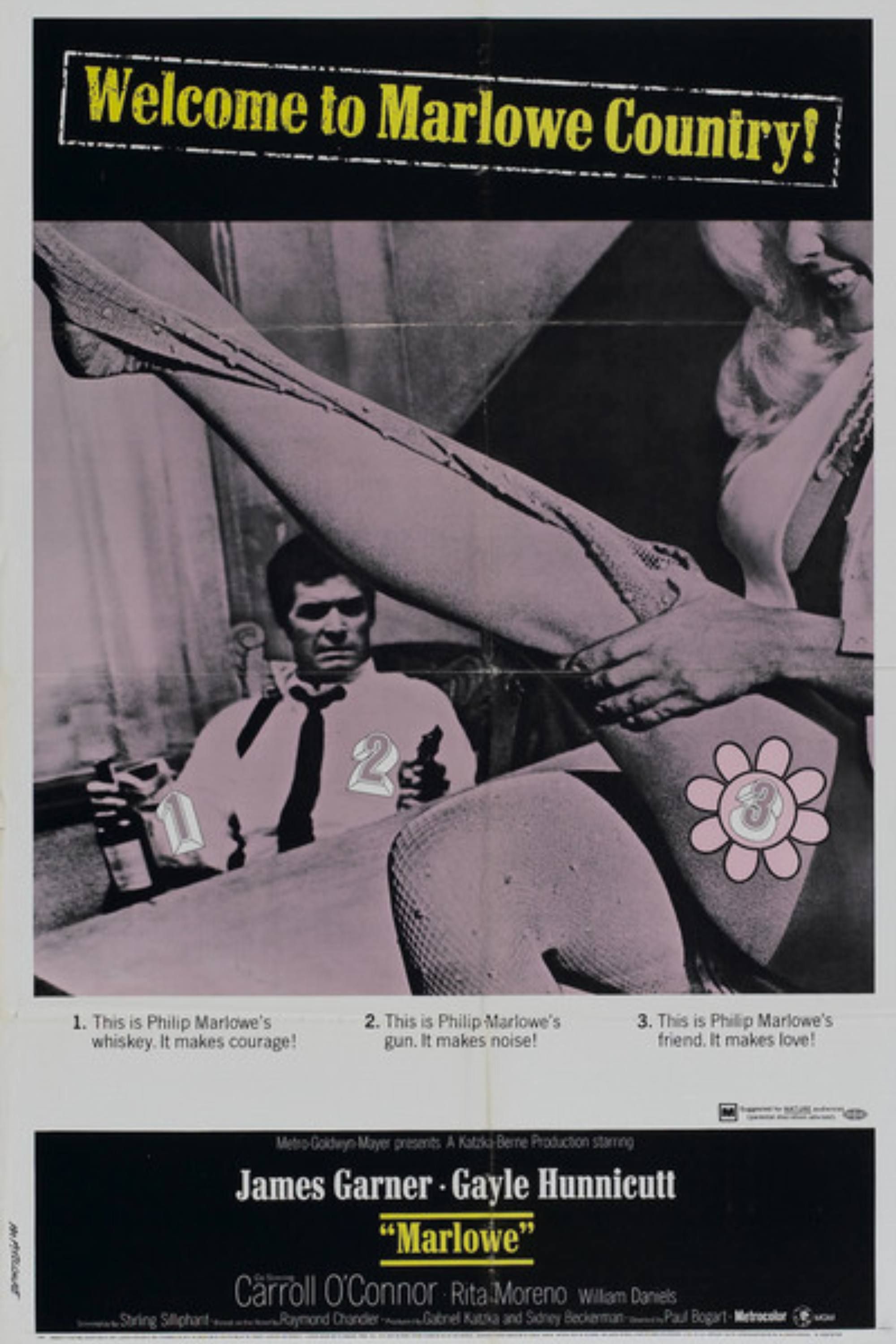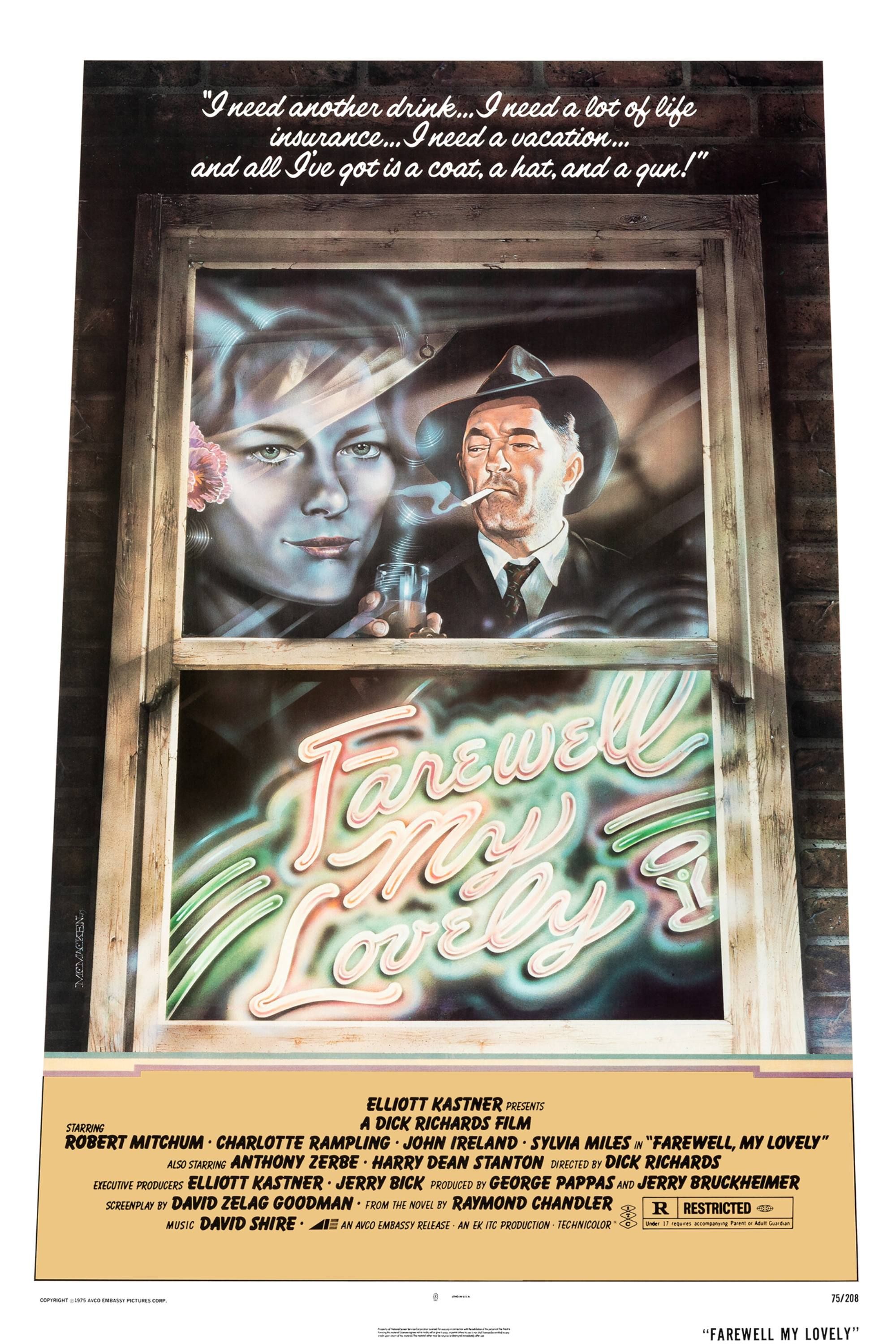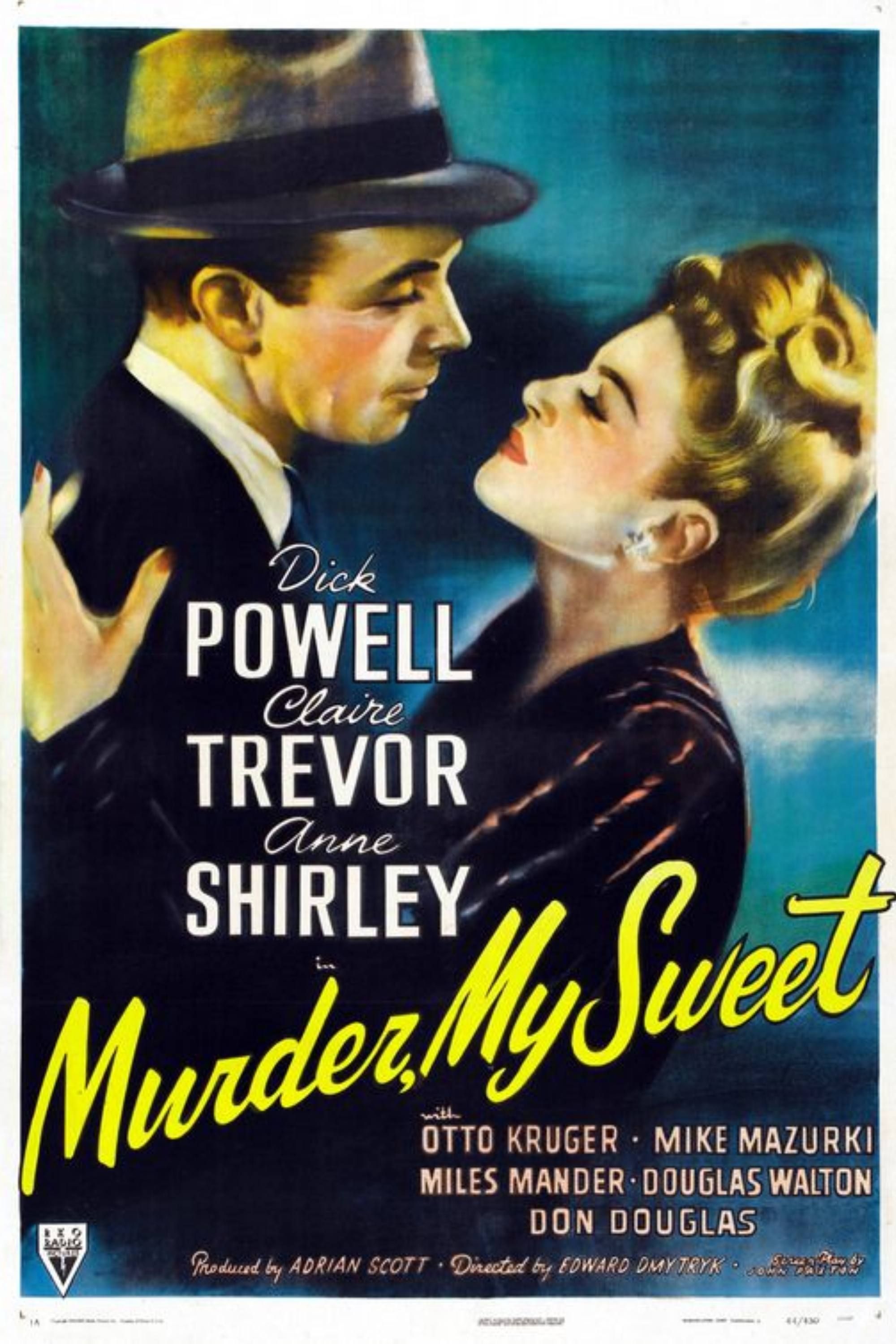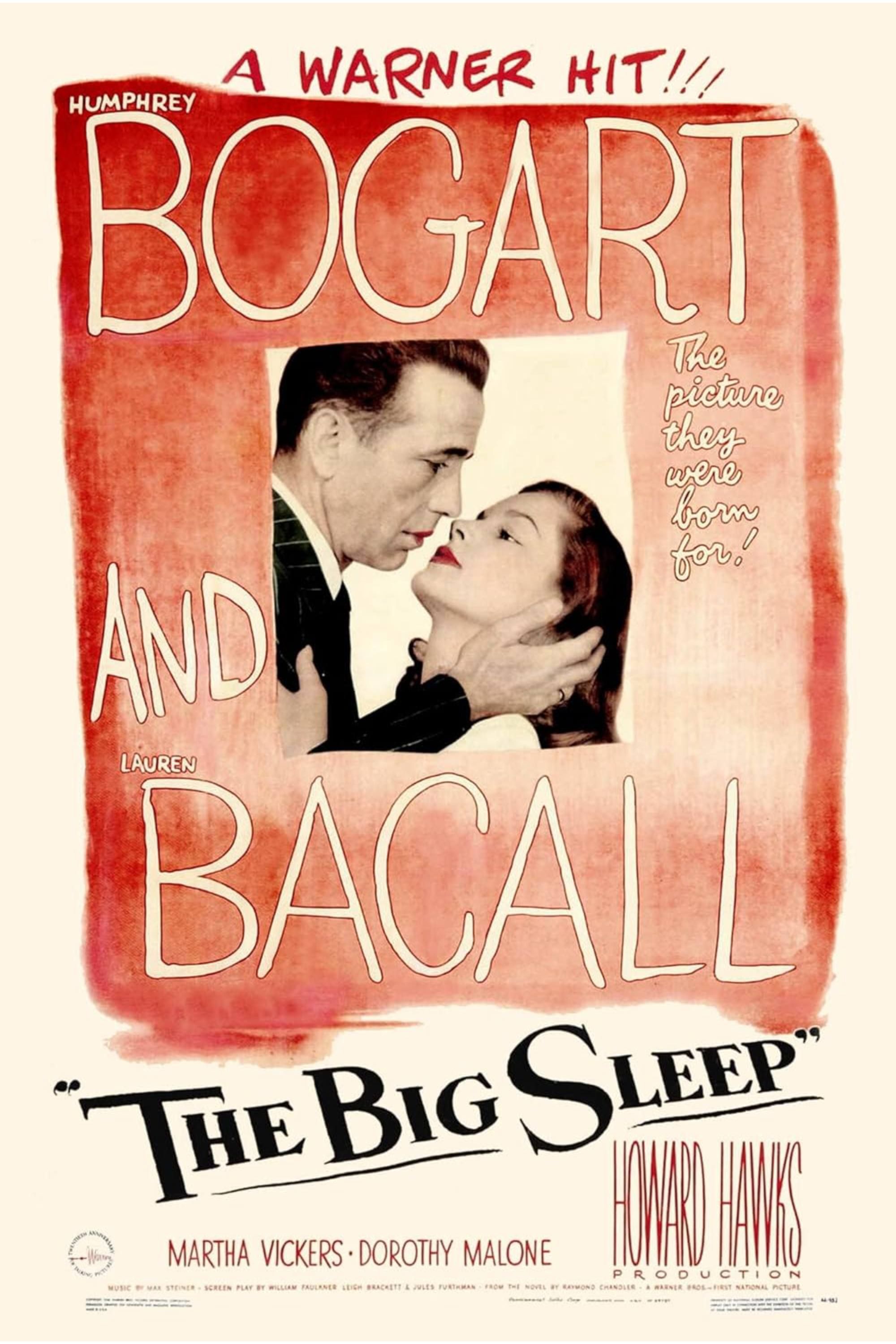Summary
- Humphrey Bogart’s portrayal in The Big Sleep remains the iconic standard for Philip Marlowe movies, capturing the essence of classic film noir.
- Marlowe in The Big Sleep embodies the quintessential hard-boiled detective, with wit, charm, and a morally ambiguous femme fatale.
- Bogart’s performance set the bar high for future portrayals of Marlowe, cementing his place as an enduring figure in the history of cinema.
The hard-boiled detective Philip Marlowe was among the most famous private investigators in cinema and has been portrayed in several acclaimed movies over the years. As a hard-drinking, no-nonsense, wise-cracking detective, Marlowe was created by the writer Raymond Chandler and versions of him appeared in short stories, novels, and a dozen feature films. Marlowe first gained prominence in the film noirs of the 1940s but has since maintained an important place in popular culture and has been continually reimagined and revived for new audiences by acclaimed writers, directors, and performers.
Marlowe has been played by some of the greatest actors who ever lived as iconic performers, such as Robert Mitchum and Humphrey Bogart, made the character their own with memorable takes on his unique characterization. In many ways, Marlowe was the quintessential film noir private detective, and his legacy has been felt across all hard-boiled crime fiction in every medium. While some Marlowe movies were certainly better than others, he’s a character who has endured through the years and held an important place in mainstream popular culture.
12 Time To Kill (1942)
Lloyd Nolan as Michael Shayne
Time to Kill was an acceptable but forgettable film noir directed by Herbert I. Leeds based on Raymond Chandler’s novel The High Window. This was before the character of Philip Marlowe gained major name recognition and, in the film version, was renamed Michael Shayne and played by Lloyd Nolan. At just over one hour in length, Time to Kill failed to capture the film noir magic that made the character come to life on the big screen in subsequent years.
All the pieces of its classic hardboiled detective source material were on display in Time to Kill as Marlowe traversed seedy streets and dank nightclubs in his pursuit of a gang of counterfeit coin producers. With such a limited runtime, Time to Kill was fast-paced throughout but was often overwhelmed by the complexity of its mystery. While Time to Kill was nothing special, it was an acceptable detective story, and there were worse ways viewers could while away an hour.
11 The Falcon Takes Over (1942)
George Sanders as Gay Lawrence aka The Falcon
Another film based on Raymond Chandler’s Philip Marlowe novel Farewell, My Love, titled The Falcon Takes Over, was also released in 1942. However, the setting was changed from New York to Los Angeles, and Marlowe was renamed Gay Lawrence, aka The Falcon, and played by George Sanders. This was the very first Marlowe movie, and the character was still finding his feet on the big screen. The renaming of Marlowe in The Falcon Takes Over felt symbolic, as the studio failed to recognize that the most interesting thing in a Marlowe movie was always going to be the detective himself.
The Falcon Takes Over lacked the spark of future film noir adaptations of Chandler’s work and, similarly to Time to Kill, was just over an hour in length. The biggest issue with The Falcon Takes Over was that, although its story was based on a Marlowe novel, the character of the Falcon had already appeared in two previous movies. Saunders previously portrayed the Falcon in The Gay Falcon and A Date with the Falcon, which stopped the established personality of Detective Marlowe from shining through.
10 The Big Sleep (1978)
Robert Mitchum as Philip Marlowe
The Big Sleep was Robert Mitchum’s second film portraying detective Philip Marlowe after Farewell, My Love three years before. This marked the only time an actor had played the character twice in feature films, and at 60 years old, Mitchum was by far the oldest iteration of Marlowe ever seen at that point. With a story moved from the original 1940s Los Angeles setting to 1970s London, The Big Sleep was able to outright address more explicit themes of homosexuality, pornography, and nudity than ever before seen in a Marlowe movie.
However, The Big Sleep was a tough act to follow, as it was always going to be compared to Humphrey Bogart’s iconic 1946 version, which stood as one of the greatest film noirs of all time. With these giant shoes to fill, Mitchum’s The Big Sleep was always going to fall short and felt flat and dull in comparison. The Big Sleep was not a bad movie by any means, but when given the choice, the earlier version will always be the one that film noir viewers choose to watch.
9 The Brasher Doubloon (1947)
George Montgomery as Philip Marlowe
By 1947, film noirs and the character of Philip Marlowe had become extremely popular due to the success of classics like The Big Sleep, and 20th-Century Fox wanted to make the most of their ownership of the film rights to Raymond Chandler’s The High Window. Fox had already adapted the novel years before as Time to Kill, but this time decided to be more faithful to the source material and keep the character of Detective Marlowe intact. This led to a far better film that was much more attuned to the wise-cracking, hard-drinking, tough-guy detective audiences had come to love.
While The Brasher Doubloon was an improvement upon Fox’s previous efforts, it also felt like an inferior copycat of Humphrey Bogart’s portrayal in The Big Sleep. Here, George Montgomery played Marlowe, but it lacked the conviction needed to make the character truly come alive on the screen. There’s snappy dialogue, a moody atmosphere, and a creepy villain played by Fritz Kortner, but when compared to the best outing of this character in the 1940s, it all felt like an unnecessary attempt to cash in on Marlowe’s recent popularity.
8 Poodle Springs (1998)
James Caan as Philip Marlowe
The most commonly forgotten entry when discussing Philip Marlowe movies was James Caan’s take on the character in the 1998 made-for-TV movie Poodle Springs. This neo-noir HBO film was based on Raymond Chandler’s unfinished novel Poodle Springs and followed an aging Marlowe in 1963 who was recently married to a young socialite named Laura Parks (Dina Meyer.) From here, Marlowe got mixed up in a story of blackmail and murder amid the wayward antics of Los Angeles’ young social scene.
Poodle Springs was just okay, and its saving grace was Caan’s performance, as he seemed to be having a great time portraying Detective Marlowe. There were plenty of twists and turns as Poodle Springs hit on the most common film noir tropes and cliches, but something felt missing, and it did not have the same infectious energy as other Chandler adaptations. There’s great potential in Poodle Springs, but overall, it was a mid-tier made-for-TV movie that’s best sought out by Marlowe completionists and left behind by those without a special affinity for the character.
7 Marlowe (2022)
Liam Neeson as Philip Marlowe
Marlowe was the only theatrical depiction of Detective Philip Marlowe in the 21st century, and sadly, it paled in comparison to the character’s best representations. While Liam Neeson did a decent job as an older, worldly-weary version of the film noir detective, the film lacked spark and felt like a meandering retread of noir tropes and cliches as it adapted Irish novelist John Baville’s authorized The Long Goodbye sequel The Black-Eyed Blonde. For all the love that Marlowe showed for the legacy of its character, the film just never came to life in the way that it needed to.
With Bogart’s classic iteration to compete with and the character already having been reimagined for modern audiences by Robert Altman and Eliott Gould, if a director like Neil Jordan really wanted to revive Marlowe once again, then it would have been wise to have something new and urgent to say. However, this was not the case, and Marlowe came across as a fantastic-looking film with practically no purpose. Sadly, Marlowe was a movie doomed to be forgotten entirely just minutes after the credits rolled.
6 Lady In The Lake (1946)
Robert Montgomery as Phillip Marlowe
Phillip Marlowe was given an extra ‘I’ in his name for Robert Montgomery’s portrayal in Lady in the Lake, a murder mystery based on Raymond Chandler’s novel of the same name. Montgomery directed himself in one of the most unusual and unique Marlowe adaptations, and it utilized a point-of-view style as viewers only saw what Marlowe saw and the character only appeared in mirrored reflections or when he addressed the audience directly. This ambitious style made it the first film of its kind, and sadly, contemporary critics dismissed Lady in the Lake as gimmicky.
However, this willingness to try something new made Lady in the Lake stand out among the litany of other inferior Marlowe movies from the 1940s. While its POV style felt interesting and exciting at the beginning, as Lady in the Lake progressed, it began to lose steam, and the style did the movie a disservice by the end. As a unique experiment, Lady in the Lake was an important film noir and an enjoyable Marlowe film, but this was not enough to make it rise above the very best portrayals of the character.
5 Marlowe (1969)
James Garner as Philip Marlowe
As the only Detective Philip Marlowe movie that paired the hardboiled investigator with Bruce Lee, Marlowe was an absolute must-see for lovers of film noirs and Kung Fu alike. With James Garner as Marlowe and Bruce Lee in a supporting role as the villain Winslow Wong, Marlowe was a convincing update on well-worn storylines that showcased the character still held some relevance after his heyday in the 1940s. While its litany of subplots made for confusing viewing, film noirs have been known for their complex and convoluted narratives, and Marlowe was no different.
Garner did well in his role as Marlowe and captured just the right balance between subdued charisma and cool confidence that made the character one of the most iconic detectives in all of fiction. Marlowe failed to reach the heights of classics like The Big Sleep and did not reimagine the character as vividly as in The Long Goodbye, but there was still a lot to enjoy about this version. For Bruce Lee alone, Marlowe was worth seeking out.
4 Farewell, My Lovely (1975)
Robert Mitchum as Philip Marlowe
As the first film to feature Robert Mitchum as Detective Philip Marlowe, Farewell, My Lovely was a neo-noir update of Raymond Chander’s novel, which powerfully captured the seedy underbelly of 1940s Los Angeles. Coming off the back of Chinatown the same year, which similarly paid tribute to film noirs of the past, Farewell, My Lovely felt like a campy tribute to a bygone era in Hollywood. This could have fallen flat on its feet, but with an actor as talented as Mitchum in the lead paired with the accomplished direction of Dick Richards, they pulled it off.
Farewell, My Lovely not only looked great and had incredible performances but gave audiences an updated version of Marlowe that leaned heavily into the hard-boiled style in which Chandler created him. Like the best Marlowe movies, Farewell, My Lovely was full of twists and had a moody atmosphere that sucked viewers into its world. Charlotte Rampling also deserved praise for her portrayal of the quintessential femme fatale seductress, Helen Grayle.
3 Murder, My Sweet (1944)
Dick Powell as Philip Marlowe
Murder, My Sweet was the first true Philip Marlowe movie, as the previous Raymond Chandler adaptations renamed and repurposed the character in different ways. With Dick Powell as Detective Marlowe, this story was based on the novel Farewell, My Lovely, and was a key influence on the development of the film noir genre as a whole. Looking back on the film today, it may be hard to see how trailblazing its stylish atmosphere and dark mood were, as countless noirs copied and mimicked it in the following years.
As Marlowe was drawn into a complex world of murder and deceit, all his classic character traits as a no-nonsense, hard-drinking, and intelligent investigator were fully displayed. Murder, My Sweet was a definitive Chandler adaptation, and Powell even gave Humphrey Bogart a run for his money by being among the best versions of Marlowe cinema that has ever been seen. It’s complex, mysterious, and still holds up eight decades later.
2 The Long Goodbye (1973)
Elliott Gould as Philip Marlowe
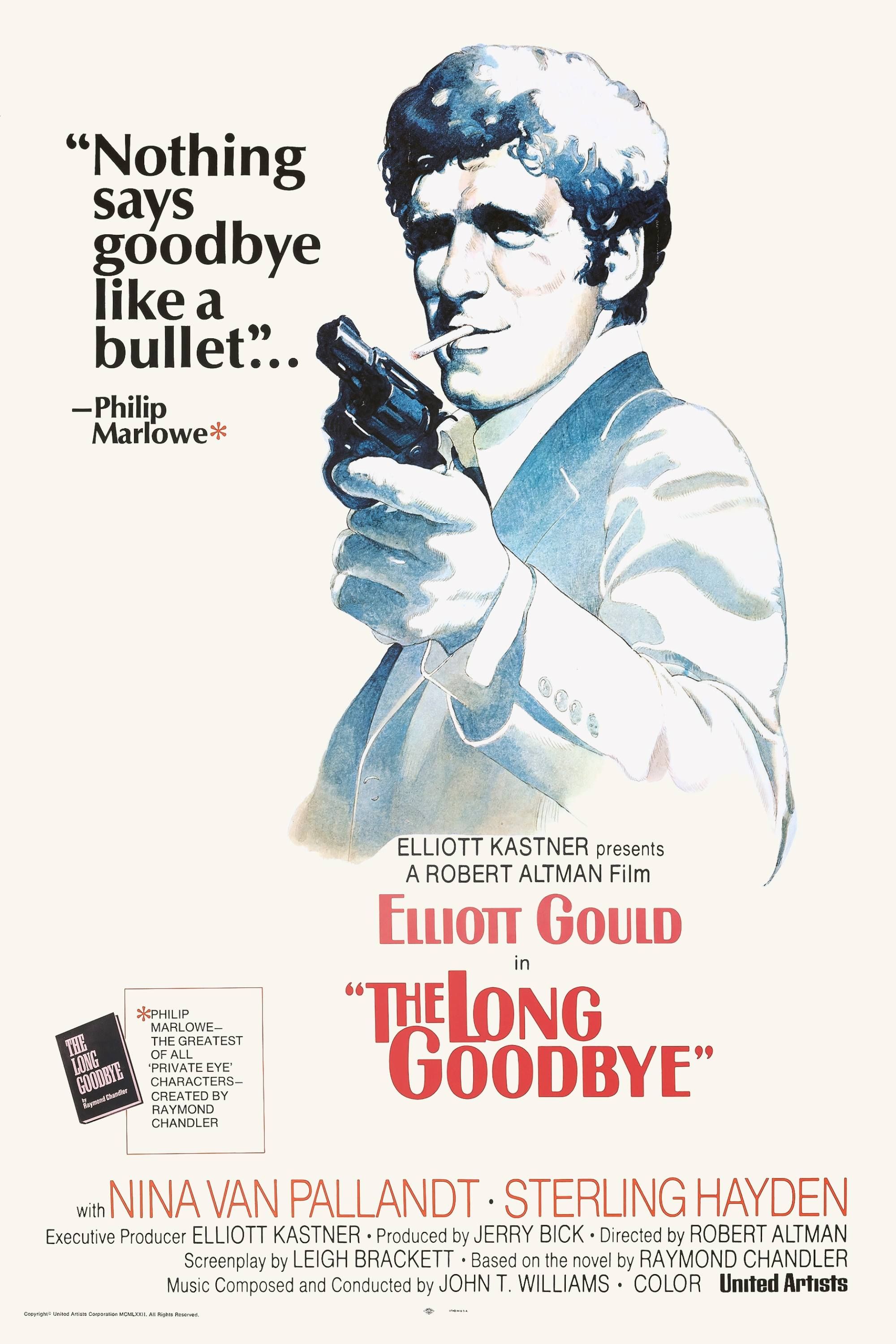
The Long Goodbye
The Long Goodbye, directed by Robert Altman, is a neo-noir film adaptation of Raymond Chandler’s novel. Starring Elliott Gould as private investigator Philip Marlowe, the story unfolds in 1970s Los Angeles where Marlowe becomes embroiled in a complex case involving murder, deception, and high society. With a relaxed and unconventional approach, Altman’s film provides a unique take on classic detective narratives.
- Director
- Robert Altman
- Release Date
- March 8, 1973
- Cast
- Elliott Gould , Nina van Pallandt , Sterling Hayden , Mark Rydell , Henry Gibson , David Arkin , Jim Bouton , Warren Berlinger
After having seen so many straightforward film noir portrayals of Philip Marlowe over the years, the satirical edge of Elliott Gould as Detective Marlowe in The Long Goodbye felt like a breath of fresh air. As a film produced in the midst of the New Hollywood era, Robert Altman’s The Long Goodbye changed the setting to 1970s Hollywood and shone a light on self-obsessed society as old notions of friendship, loyalty, and purpose had lost their meaning. The Long Goodbye deconstructed hard-boiled detective fiction and imbued it with a self-referential sense of humor.
While The Long Goodbye attempted to do something new with the film noir genre, it was misunderstood in its time as critics misinterpreted Gould’s portrayal of Marlowe as being haphazard and out of step with his established traits. However, reimagining Marlowe as an untidy, unshaven, and at times even goofy character highlighted the absurdity of his existence and gave him a sense of realism missing from the suave and charismatic 1940s film noir versions. The Long Goodbye worked well as a satirical one-off reimagining of the character as it subverted everything audiences had come to expect.
1 The Big Sleep (1946)
Humphrey Bogart as Philip Marlowe
There was only ever going to be one answer when it came to the best Philip Marlowe movies, and that was Humphrey Bogart’s iconic portrayal in The Big Sleep. As one of the greatest film noirs ever made, The Big Sleep paired Bogart with his real-life wife Lauren Bacall for a classic hard-boiled detective story that captured the essence of what made this genre work so well. From its convoluted storyline to its morally dubious femme fatale, The Big Sleep was a thrilling journey into a world of blackmail, deceit, and murder.
The Big Sleep was a quintessential noir and an absolute must-watch movie for lovers of this genre that highlighted everything special about the character of Philip Marlowe. Marlowe was indeed a hard-drinking, no-nonsense detective, but The Big Sleep also captured his wit, intelligence, and depth of characterization. Ever since The Big Sleep was released in 1946, whenever viewers thought of Philip Marlowe, it was Bogart’s face that they imagined, which was a testament to the iconic nature of his performance and the enduring legacy of this all-time classic.



